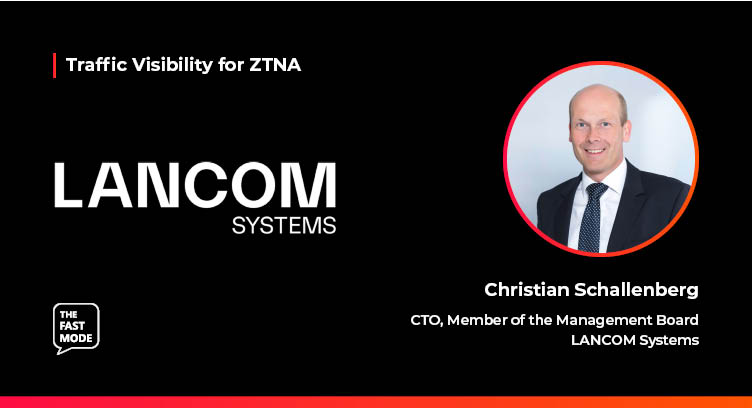The Fast Mode spoke to Christian Schallenberg, CTO at LANCOM Systems and member of the Management Board on the impact of traffic visibility on ZTNA networks. Christian joins us in a series of discussions with leading cybersecurity and networking vendors, assessing the evolution of ZTNA technologies, the roadmap for ZTNA deployments, the benefits of ZTNA for enterprise and telco networks, and the need for real-time traffic visibility technologies such as DPI for ZTNA.
Ariana: How well are zero-trust principles espoused by today’s networks?
Christian: The universal application of ZTNA principles to today's networks will take many more years. Taking this further, one might ask, "When will we finally be able to shut down our intranet?" and then conclude that a complete, zero trust-based transformation of both local LANs and remote network access can only be done incrementally. I therefore strongly recommend taking a dual approach by continuing network segmentation and securing all transition points while gradually migrating to a full zero-trust architecture. This requires low-threshold solutions that meet the individual security requirements and level of integration of an organization and enable a step-by-step implementation of zero-trust principles. In this way, even small and medium-sized companies can gradually migrate to a zero-trust network architecture.
Ariana: Why is ZTNA the future of enterprise security?
Christian: To increase agility and competitiveness, organizations today rely on cloud computing and hybrid-work concepts. Employees require direct access to applications at any time, regardless of where they are, in order to collaborate quickly and productively. However, in a cloud-driven environment, the attack surface increases exponentially as every internet-connected service, user and device becomes a potential entry point. Perimeter-based security with VPNs and firewalls can no longer provide the necessary level of protection. Moreover, nowadays, more than 95% of data traffic is encrypted via https, which is almost impossible to control.
ZTNA reduces the attack surface to a minimum by introducing strict, user and application-based network access control. In this way, companies can consistently secure their corporate resources while maintaining user flexibility and mobility. At the same time, zero-touch and auto-configuration principles ensure scalability and maximum ease of use, making zero trust a future-proof solution for organizations of any size.
In 2010, Christian Schallenberg became authorized signatory and CTO responsible for LANCOM’s products and solutions. He is also member of the company’s Management Board. In 1996 Christian joined the Workstation Computer Graphics Development department at ELSA AG and later researched the first commercial ADSL router. He moved on to various positions in product management, and has been heading this department at LANCOM Systems since the company’s foundation in 2002. Christian studied communications engineering at the RWTH Aachen University and business administration at the WHU in Vallendar, the Kellogg School of Management in Chicago, and the HKUST in Hong Kong.
This interview is a part of The Fast Mode's Next-Gen DPI Traffic Visibility for ZTNA segment, featuring over 40 leading cybersecurity and networking solution providers and their views on the importance of traffic visibility for ZTNA. A research report on this topic will be published in January 2024 - for more information, visit here.


















